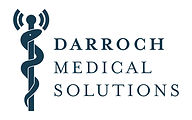
Adverse Events
“The $20B Problem”
What are Adverse Events, and How Bad Are They?
Adverse events (AEs) are defined as unintended injuries caused by medical mismanagement during hospitalization rather than the disease process.
According to a recent study New England Journal of Medicine, the likelihood of a patient experiencing at least one adverse event is roughly 25%, and with 32M hospitalizations per year, adverse events are becoming an increasingly prevalent issue in today's healthcare institutions.
-
In a study by McDermott et al. (2017), one in three patients experienced an AE during their stay in a hospital. [1]


-
4. McDermott, Kimberly, et al. “Trends in Hospital Inpatient Stays in the United States, 2005-2014”. Healthcare Cost and Utilization Project, June 2017. Agency for Healthcare Research and Quality.
Adverse Events are Preventable
Recent studies have suggested that up to 60% of acute care AEs can be prevented with improved patient monitoring and an effective Early Warning System (EWS). In many cases, unusual fluctuations in a patient’s vital signs (e.g. blood pressure, respiration rate, pulse, etc.) often serve as an indication of an impending AE. However, nurses often lack remote knowledge into patient medical device data, making it difficult to identify the early biomarkers of an adverse event.
Challenges in Identifying Adverse Event Biomarkers

Darroch Medical Solutions is creating a unique platform to solve these problems.
Our Beat Analytics System and Wearable Monitor autonomously collect data at high frequencies (up to once per second), with consistent measurements. By presenting this data on the Lumori App, we remotely provide practitioners with a comprehensive understanding of the patient's current and historical medical device data.
With the implementation of the Beat Analytics System, we can deliver a potential 10x ROI for care facilities.


